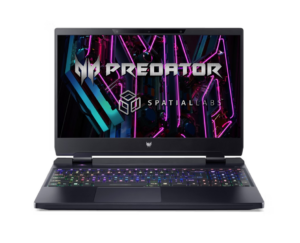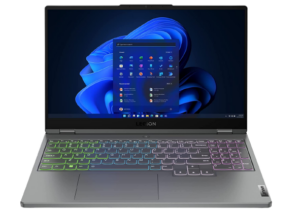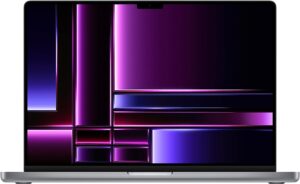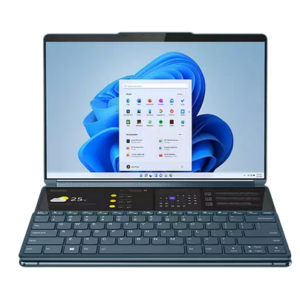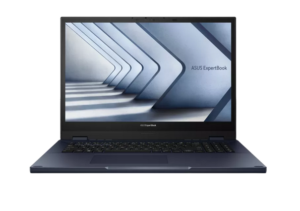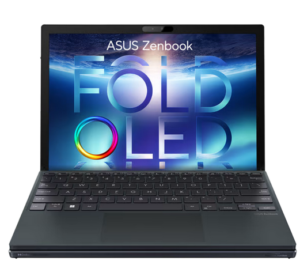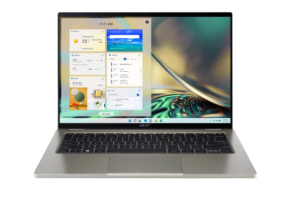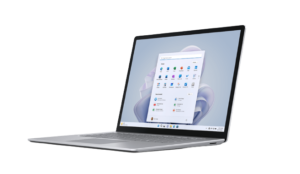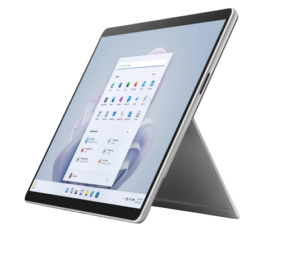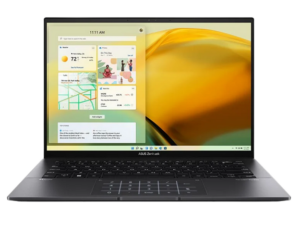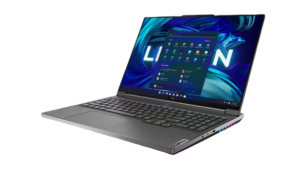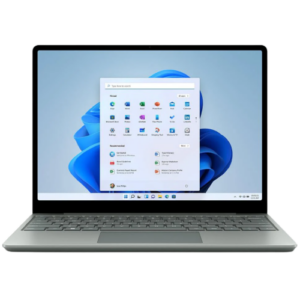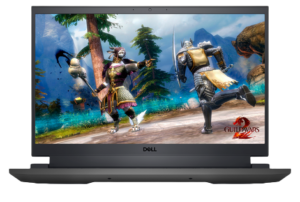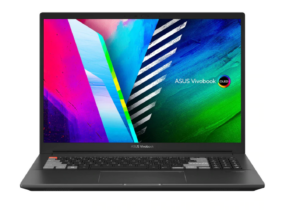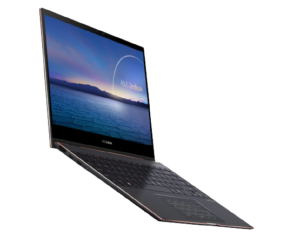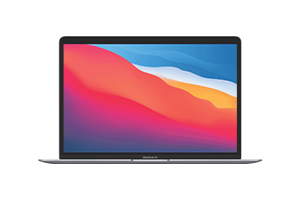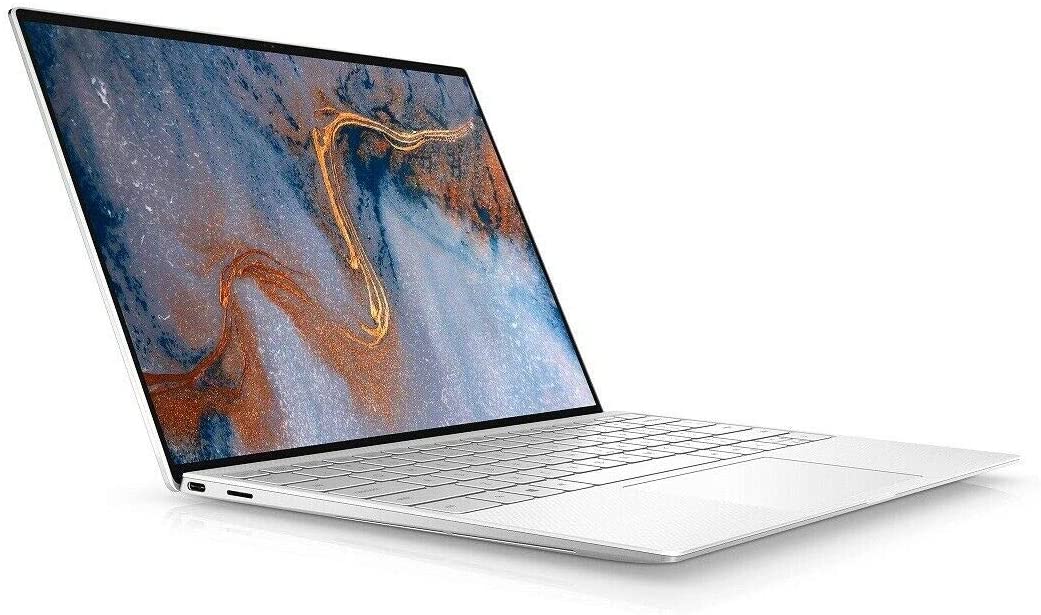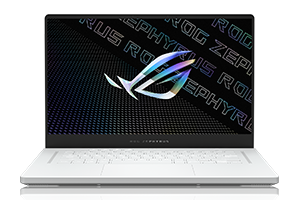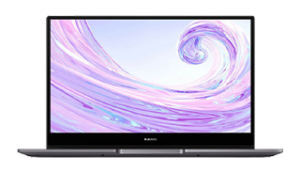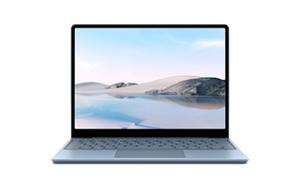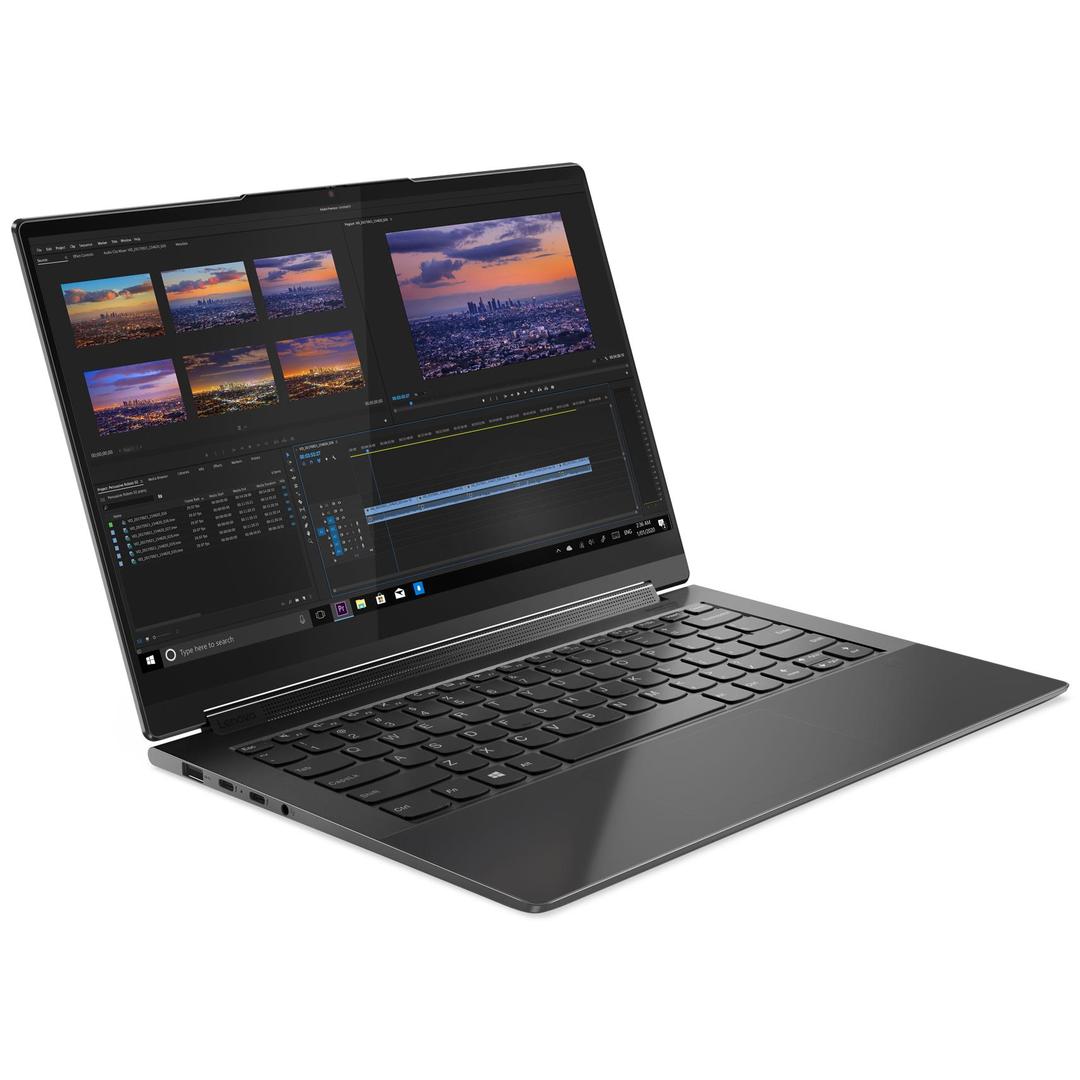An OLED and a GPU push Lenovo's latest lean laptop into greatness.
Lenovo Yoga Pro 7i (2024) review: Excess and success
Buying a new laptop involves picking your battles and choosing the right compromises for your situation. Want a smoother relationship between your iPhone and your PC? A MacBook might be the way to go. Prefer the raw power and prowess of a content creation station like the ASUS Vivobook Pro? You're going to have to make sacrifices when it comes to portability and you're going to have to pay more up-front.
For some though, the spotlight on these bespoke scenarios and edge cases is to miss the forest for the trees. If you aren't coming to the table with specific asks beyond a traditional clamshell form factor, better than entry-level grade performance and a price that won't cost you an arm and a leg, it can be hard to know where to start let alone where to go if you want just a little bit more without going overboard.
Finding the right laptop usually involves learning to speak the language, but the Lenovo Yoga Pro 7i is something of a Rosetta stone.

How much does Lenovo Yoga Pro 7i cost in Australia?
In Australia, pricing for the Yoga Pro 7i starts at $2549.
There are several variants available, with the cheapest shipping with an Intel Core Ultra 5 125H and 16GB of memory. The most expensive model comes with an Intel Core Ultra 7 155H, 32GB of memory, an OLED screen and an Nvidia RTX 4060. The middle-of-the-road model has 32GB of RAM but has an OLED screen and a faster processor.
As usual, there are still ways to save money if you know where to look. To lock in the best bargain Australia's retailers offer when it comes to the Lenovo Yoga Pro 7i, check out the table below.
Before you make a decision, be sure to read our recommendation for the specs.
Lenovo Yoga Pro 7i - Design and features

If you buy a brand-new version of this product, the box will include the following:
- The Lenovo Yoga Pro 7i
- Power brick and AC adapter
Every good laptop is built around a good screen and the Yoga Pro 7i is no different in that regard. The machine features a 14-inch PureSight Pro Display with 100% DCI-P3 colour, 3K resolution and a 120Hz refresh rate. Our review unit was a special variant of the device that featured a 2.8K OLED screen, which is also available.
Looking past the headline act here, this year's Yoga Pro 7i looks a lot like last year's model. It's got a larger (and quieter) trackpad, a keyboard with 1.5mm of press, a 1080p camera, a quartet of Dolby Atmos-optimised speakers and microphones, plus a privacy shutter and MIL-STD 810H durability (though the usual caveats apply).
While this moniker is mostly just marketing, there are a few criteria that Lenovo uses to separate PureSight-graded screens from the rest of the crowd. Specifically, the term covers top-of-the-range displays with more than 220 pixels per inch, a 90Hz adaptive refresh rate and 1 millisecond response time.
LCD PureSight screens are expected to hit 100% sRGB colour space and volume while OLED ones are required to meet 100% DCI-P3 standard and 10-bit colour depth.
As far as premium laptops go, the Yoga Pro 7i errs on the side of slimness but doesn't go so lightweight as to rob you of the satisfaction of flipping the lid open with a single finger.
There's a similar line balance between essentialism and excess when it comes to the ports on the portable PC. The left-most edge is host to a pair of USB-C ports and a HDMI output. The right is where you'll find an old-school USB-A port, a headphone jack and the power key.
Lenovo hasn't exactly reinvented the wheel when it comes to this year's Yoga Pro 7i but that's not to say they aren't on a roll here.
Lenovo Yoga Pro 7i - Performance and battery life

Under the hood, the Yoga Pro 7i is kitted out with Intel's latest Ultra processors, up to 32GB of RAM and up to 1TB of SSD storage. The model I reviewed featured 32GB of RAM, 1TB of RAM and an Intel Core Ultra 7 155H processor, which is pretty much as powerful as this device gets.
Unless you opt for the OLED model, the one missing piece of the puzzle here is a GPU. That's something you're not necessarily going to miss if all you're using this for is answering emails and editing the occasional image in Lightroom. However, if you are looking to use this for more than the odd game of Hearthstone or Minecraft then that's an upgrade that's going to be worth the expense.
If you do pay for that more expensive model, you don't just get a better screen. You also score an Nvidia RTX 4050. This addition makes a huge difference in terms of what you can realistically do with the Yoga Pro 7i. This thing can run Cyberpunk 2077 at a playable framerate in a pinch.
In terms of how we'd rate it, the Yoga Pro 7i fits neatly into the Enthusiast category so long as you're sticking with the model that has a discrete GPU. That variant of the device is more than capable enough for everyday tasks and power users who want to get the most out of its multiple displays, but the absence of advanced cooling tech means that it won't suit situations where those inclusions are more necessary than nice-to-have.
Essential processors should be able to handle the basics: email, social media and some light web browsing. Gaming or more advanced tasks like image and video editing are likely off the table.
Everyday processors should be able to confidently meet basic performance requirements for most people. Email, social media and web browsing shouldn’t be a hassle, and while they aren’t able to handle graphically-demanding AAA releases, they should be able to run some indie or casual games. This is typically where Chromebooks top out.
Enthusiast processors should be able to easily exceed the minimum requirements of most users and be powerful enough to handle some AAA gaming, though not at the highest fidelity. That usually excludes most ARM processors.
Extreme processors should be able to do anything you can think of. Games should run at high frame rates on the highest possible settings, and multitasking shouldn’t be limited in any significant way.
Across our usual gauntlet of benchmarks, the performance of the Yoga Pro 7i was varied enough that it verged on scattershot. It lagged well behind the likes of the HP Spectre X360 14 2-in-1 and Microsoft's new Copilot Plus Surface Laptop when it came to Geekbench but lapped both when it came to GPU performance.
The RTX 4050 might be far from Nvidia's most beastly bit of hardware but it's a huge step up on the graphical grunt available to devices still relying on an integrated setup. Those gains were more or less mirrored when it came to Novabench and Cinebench, though its lead on single-core performance was not nearly as impressive on that particular front.
In terms of more anecdotal performance, the Yoga Pro 7i proved to be more than suitable for my needs. The inclusion of a discrete GPU and OLED screen here is the big X factor that elevates the accomplished design into a new middle ground between portable powerhouses and more modest mobility machines.
Battery life was also relatively impressive, with it taking about 8 hours and 19 minutes to run the Lenovo Yoga Pro 7i down from 100% to zero. That's a better result than many of the other Windows laptops we've tested but well short of the long battery life you can expect from ARM-based devices like the MacBook or Microsoft's new Copilot Plus PCs.
There are few things more annoying than buying a brand new laptop and discovering it has a bunch of annoying bloatware installed out of the box. Here's what the software situation for the Lenovo Yoga Pro 7i looks like once you've set it up for the first time.
- Dolby Access
- Lenovo Pen Settings
- Lenovo Now
- Lenovo Vantage
- Lenovo Hotkeys
- McAfee
- Spotify
Is the Lenovo Yoga Pro 7i worth buying?

For the money, there's little to fault about this year's Yoga Pro 7i. However, that praise does come with a pretty big catch.
Having only spent serious hands-on time with the version of the device that features an OLED screen and dedicated GPU, it's tricky to extend the same goodwill towards the variants that feature neither. While the similarity in design and features suggests that the overall experience across the Yoga Pro 7i roster shouldn't deviate too widely, the reality is that this "Goldilocks model" comes with those two specific inclusions that put it in a different league to its siblings.
If the baseline version of this device dropped the OLED but kept the GPU, it'd be a different matter. As it is, my time with the latest Lenovo Yoga Pro 7i left me with little doubt that it's one of the better Windows laptops you can buy right now but that feat doesn't come cheap.
What spec should I buy?
Not every incarnation of the Lenovo Yoga Pro 7i is born equal. If you pay a little more, you'll get a lot more when it comes to performance. For a sense of how the minimum spec for the laptop compares to our recommended spec for it, check out the table below.
Storage: The baseline model comes with 512GB. This can be upgraded.
Memory: The baseline model comes with 16GB. This can be upgraded.
How does Lenovo Yoga Pro 7i compare?
How we review laptops
Whether you're looking at a mainstream computer brand like Dell or a dedicated gaming brand like MSI, there's an immense number of decisions you'll need to make when purchasing a laptop. If you're not sure where to start, here are a few important features to consider when shopping for your next laptop:
- Screen size and type: Unlike upgradeable components like your GPU, RAM and storage, you're stuck with the display you buy when you purchase a laptop. Is it a comfortable size? Does it offer a wide-viewing angle?
- Resolution: Similarly, you can't change your display's resolution after the fact. 1080p (Full HD) is the bare minimum these days and most laptops worth their price tag aim for 1440p at least (QHD or QuadHD) but you can also opt for 4K if you're willing to spend a little extra.
- Refresh rate: A screen's refresh rate is the measurement of how frequently it changes. If you play fast-paced multiplayer games like Call of Duty, you know that the difference a few milliseconds that a high refresh rate gets you can count for a lot. The higher the refresh rate, the better. Most conventional laptops offer 60Hz to 90Hz but fancier gaming laptops can offer 144Hz, 165Hz or even 240Hz screens.
- Ports and connections: Like your screen, ports will impact your everyday experience with a laptop, particularly if you use it for work. While you can work around this with USB hubs and adapters, a laptop with fewer ports than you need can quickly become a headache.
- Future-proofing: There are no hard and fast rules here but as a general suggestion, you'll want to sure you're laptop has the legs to survive a few years of technology improvements in any way you can. You can overshoot on your desired specs, spending more on a machine that's more powerful than you currently need, or opt for a model or brand that has support for upgrades down the track. Check which features of the machine are upgradeable. The Dell XPS 15, for example, supports additional RAM, while Apple MacBooks do not.
Check out our dedicated laptop buying guide for more suggestions on shopping for the best laptop for your needs or this more in-depth guide on how we review laptops.
Lenovo Yoga Pro 7i FAQ
16GB is a good place to start when it comes to RAM, but it's not necessarily going to be the end of the road if your needs are more demanding. It's enough to get by, but it might not be enough for the future or for more performance-oriented users.
If your next laptop doesn't support upgrading your RAM later down the line, it's usually smart to overshoot and aim for 32GB of RAM instead.
Not all RAM is born equal. Size isn't everything. Speed also matters.
If you're looking to find out just how fast the RAM in your laptop is, the quickest way to do so is to identify the type of memory and then Google the standard expected speeds that it should offer. For example, LPDDR5 offers speeds of up to 6400Mbps while DDR4 memory can only rev up to 3200Mbps.
If you want to go one step further and determine whether the RAM in your laptop is delivering the speeds it should be capable of offering, then it might be worth putting the hardware to the test with a benchmarking tool like Novabench.
It's easy to spend too much or too little on your next laptop, but our take is that the best value laptops tend to sit between $1600 and $2200 in terms of price. PCs that occupy this price-point might not be able to outperform more expensive alternatives, but the bump up in quality over cheaper ones is well worth the cost involved.
Simply put, laptops of this price segment tend to sidestep all the compromises of going cheaper while getting most of the performance you'll get from spending more.
These days, there are three types of Intel Core processors found in laptops. The first is the humble Intel Core i5 processor, then there's the middle-of-the-range Intel Core i7 and the poweruser-oriented Intel Core i9.
If you're going purely by the numbers, the Intel Core i9 is going to provide the best results. However, it's also the most demanding in terms of thermal management. A laptop running an Intel Core i9 processor will be faster than one with an Intel Core i7 or Core i5, but it'll also run hotter.
If you're an everyday or more casual user, an Intel Core i5 is probably going to be fast enough for you. If you're more discerning or planning to play a lot of games, then the up-sell to an Intel Core i7 probably makes sense.
While there's no single component responsible when it comes to laptop speed, the part that usually takes the credit is the processor. If you want your next laptop to be a fast one, you'll want to make sure it has a good processor in it.
As with desktop PCs, the processor is only part of the picture however. If your laptop lacks enough RAM or relies on a slower hard drive for file storage, that'll act as a bottleneck on the performance of the machine as a whole.
Related Articles












